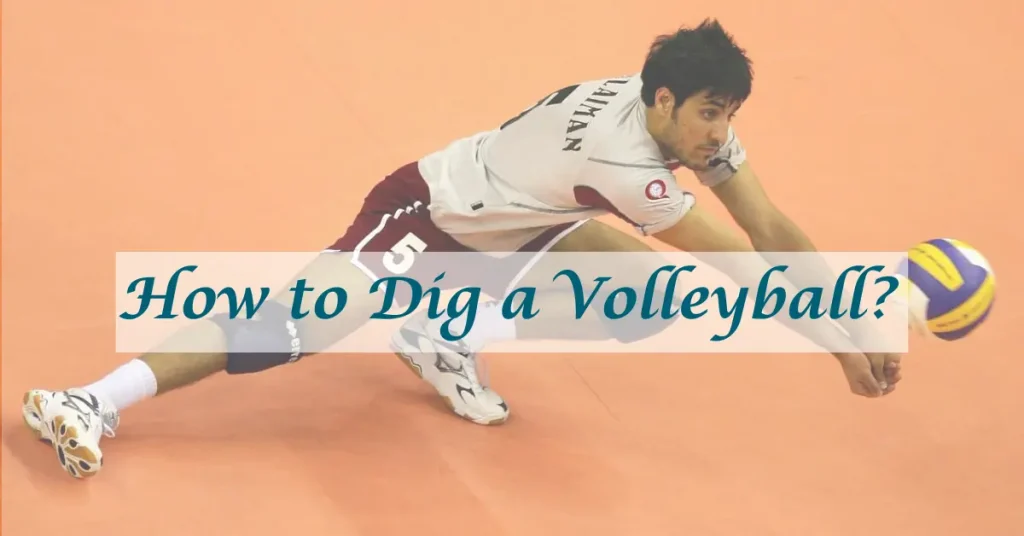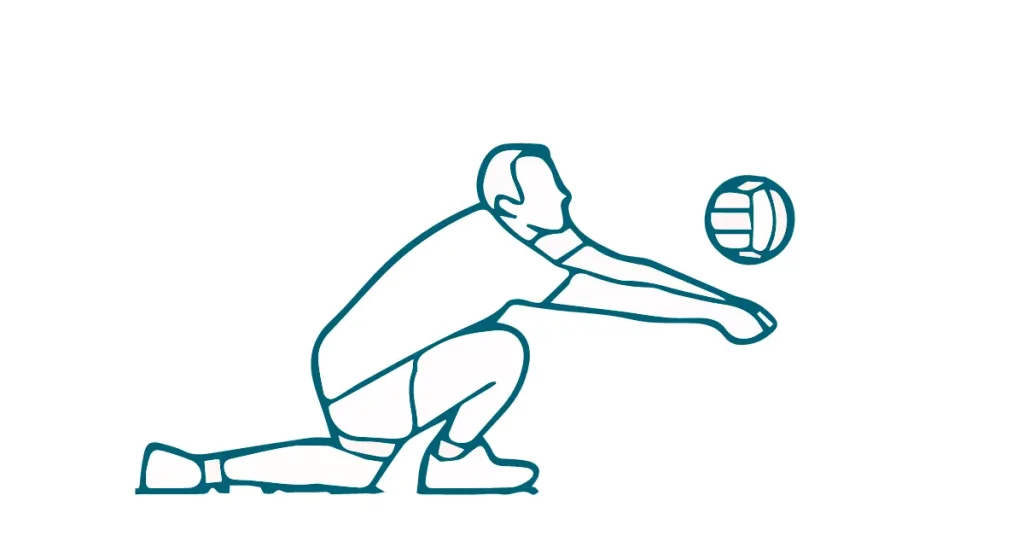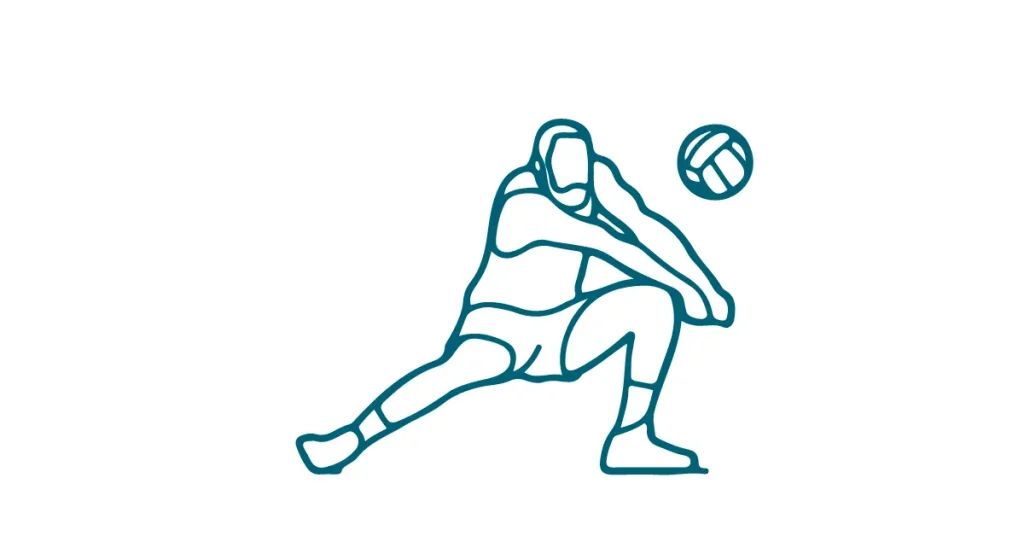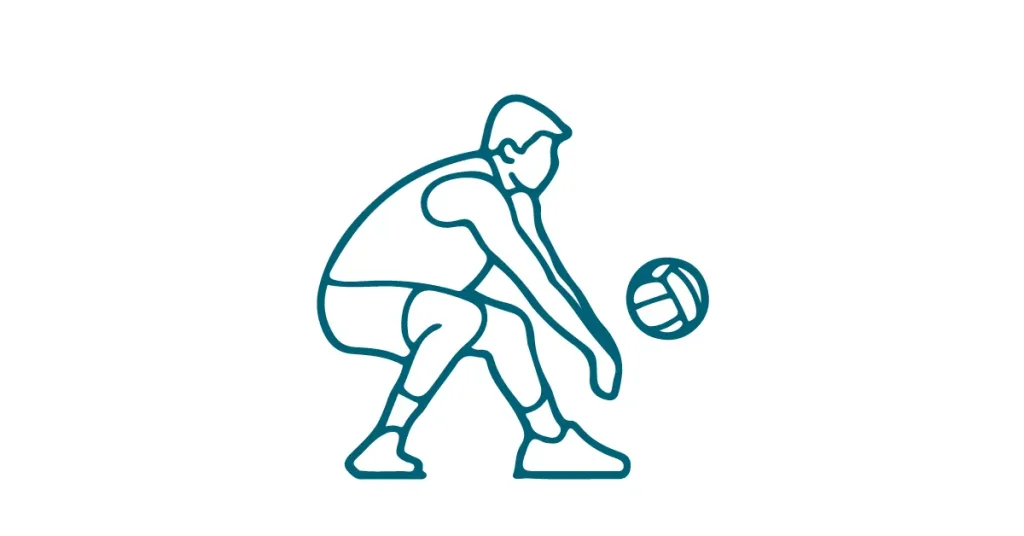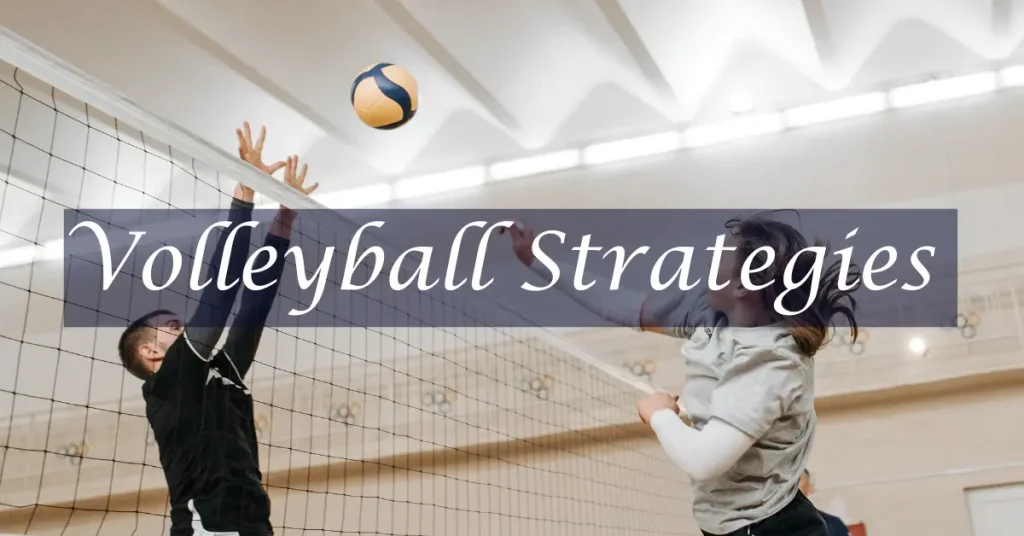Many people, including me, think and want to learn about volleyball strategies, whether they are newbies or professionals. The most important strategy is how to dig a volleyball. This skill can turn the game in your team’s favor and pay you for the team’s overall victory.
The art of digging involves saving a ball from hitting the floor after an opponent’s attack, and it requires quick reflexes, precision, and technique. Whether you’re new to the sport or looking to improve your skills on the court, this guide will walk you through everything you need to know about digging in volleyball.
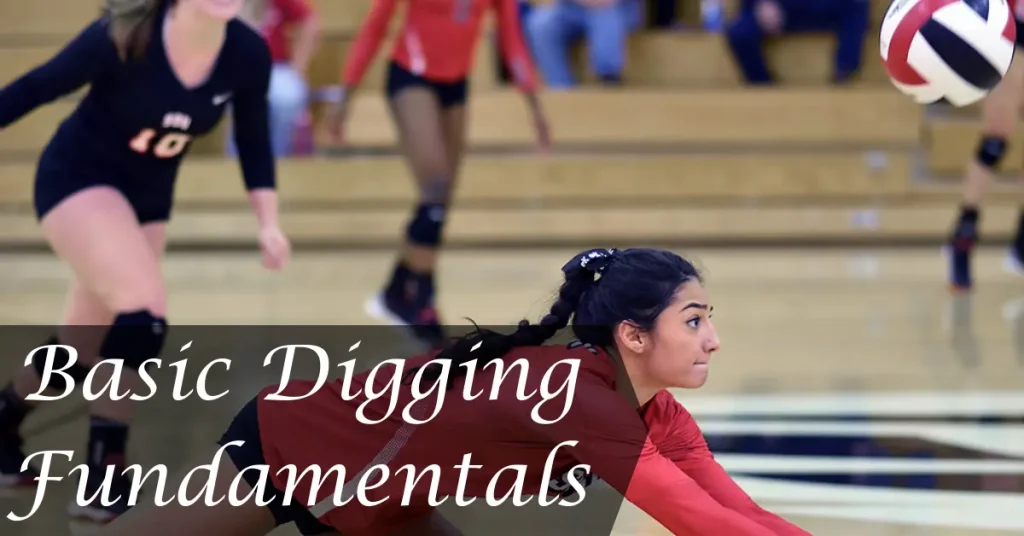
What is Digging?
Digging is a fundamental skill in volleyball that requires quick reflexes, precise movements, and solid technique. It prevents your opponents from scoring points and sets up opportunities for your team to counterattack. Knowing the basic digging techniques can greatly improve your defensive play on the court.
The Basic Techniques of Digging
Digging may seem simple at first glance, but mastering this fundamental skill can make all the difference between victory and defeat. You’ll become an invaluable asset on any volleyball team by learning proper techniques, properly positioning yourself on the court, and practicing drills specifically designed for digging. Here are some key techniques to focus on:Preparing for the Dig
Before stepping onto the volleyball court, it’s important to mentally and physically prepare yourself for the dig. This essential defensive technique requires focus, agility, and quick reflexes. Here are some tips to help you get ready:Executing the Dig
Unique talent and technique are key when executing a successful dig in volleyball. It’s all about using your platform and body positioning to control the ball and send it back up for your team to continue the play. Here are some tips on how to execute a dig effectively.Reacting to Spikes:
Anticipation is crucial; when you see an opponent preparing to spike or hit the ball over the net, get ready! Position yourself slightly behind and low with your knees bent, keeping your eyes focused on the hitter’s arm swing. This will help you react quickly and position yourself in line with where the ball will likely go.
Ball Handling:
Next, use proper form when making contact with the ball. Extend both arms before you, creating a solid platform with your forearms. Keep your wrists firm but not locked, allowing for flexibility upon impact. Aim to make contact with the lower third of the ball using a flat surface, redirecting its trajectory upward and toward your target area.
Timing:
Timing plays a significant role, too! Make sure you time your move correctly to move into position just as or slightly before the hitter makes contact. This allows maximum control over where to direct the ball while minimizing any chance of misdirections.
Adapting the Dig
In volleyball, adapting your dig is crucial for successful defensive play. Every opponent’s attack varies in speed, angle, and power, so you need to be prepared to adjust accordingly. Here are a few tips on how to adapt your dig://Remember, adapting your dig requires quick thinking and agility on your feet – both mentally and physically! By staying focused and making split-second adjustments based on what’s happening in front of you, you’ll significantly improve your ability to execute a well-adapted dig during intense gameplay successfully.//
Footwork and Positioning for a Successful Dig
Regarding digging in volleyball, footwork and positioning are crucial for a successful play. Proper footwork allows you to move quickly and efficiently toward the ball while correctly positioning yourself, ensuring you can make a solid dig.
Footwork starts with a good defensive stance. Keep your feet shoulder-width apart, knees slightly bent, and weight on the balls of your feet. This position allows you to react swiftly in any direction. When the opposing team attacks, take small steps toward the ball as it approaches. Always stay light on your feet and be ready to adjust if necessary.
Regarding positioning, reading the hitter’s body language and predicting where they will hit the ball is important. Anticipate their swing by watching their arm movements or observing their approach angle. Position yourself accordingly to get behind the ball at the right spot.
Another key aspect is understanding court coverage areas based on your defensive position. For example, as a back-row player positioned near sideline defense (usually called “zone 5”), be prepared for cross-court hits by shading slightly towards zone 6 while covering zone 5 effectively.
Quick reactions are also essential when adjusting your position during a dig attempt. If an attacker changes their target at the last moment or if there is an unexpected tip or dink over the net, be ready to pivot quickly and move into prime position to make contact with precision.
Tips for Improving Your Digging Skills
//Remember that improving digging skills takes time and practice – there are no shortcuts! You’ll see noticeable improvements and changes by merging these tips into your training and staying committed to honing your skills.//
Common Mistakes to Avoid When Digging
Digging in volleyball requires a combination of skill, technique, and focus. However, even the most experienced players can make mistakes that can hinder their ability to execute a dig successfully. Let’s take a look at some common mistakes to avoid when digging.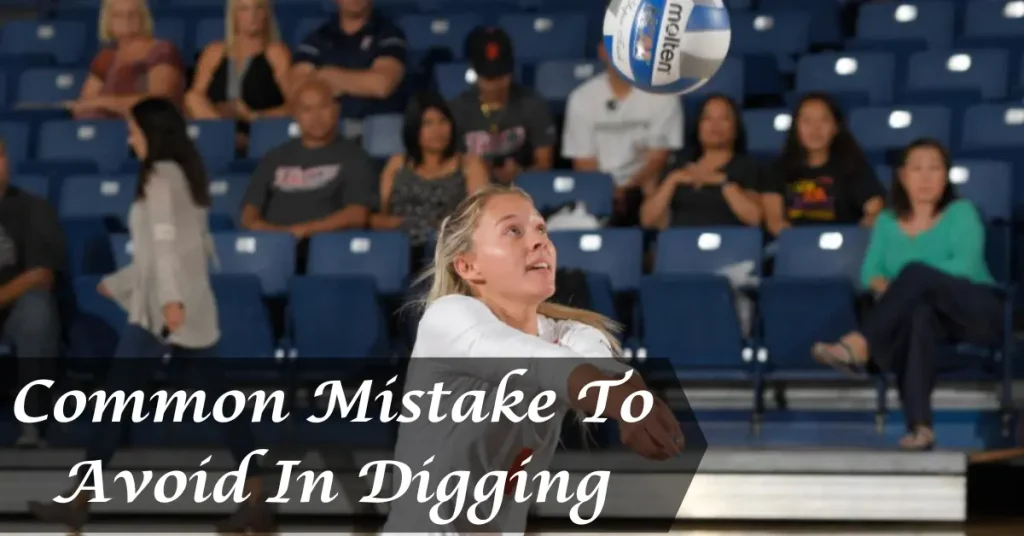
Drills and Exercises to Practice Digging
Drills and exercises are essential for improving your digging skills in volleyball with respect to strategies. Integrating these drills into your training routine can enhance your reflexes, agility, and defensive abilities on the court.
One effective drill is the “Wall Drill.” Find a sturdy wall or use a designated space with markings resembling a net. Stand about 5-7 feet from the wall and practice digging against it. Focus on proper technique, keeping your arms strong but relaxed as you contact the ball.
Another useful exercise is the “Partner Toss.” Grab a teammate or friend to participate in this drill. Stand facing each other at a distance of about 10-12 feet apart. Take turns tossing balls to each other with varied speed and angle. This drill helps simulate game-like situations where you must react quickly and accurately to incoming attacks.
To improve your footwork while digging, try the “Ladder Drill.” Set up an agility ladder on the ground and perform quick forward-backward movements through each rung. This will help train your footwork coordination, allowing you to move efficiently.
FAQs:
Conclusion:
In final words, mastering the art of digging in volleyball requires a combination of technique, anticipation, and agility. Players can significantly enhance their defensive skills by focusing on proper body positioning, maintaining effective communication with teammates, and practicing drills to improve reflexes and footwork. Avoiding common mistakes such as improper positioning and lack of communication is vital for consistent success on the court. Through dedicated practice and attention to detail, players can become invaluable assets to their teams, contributing to victories through solid defensive play.

